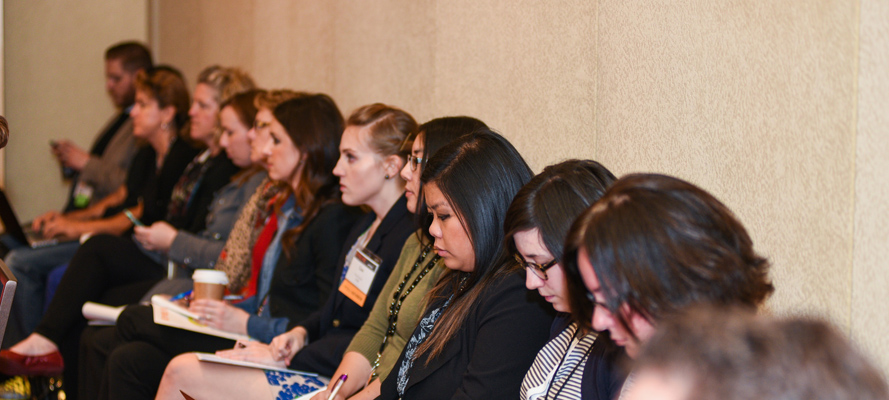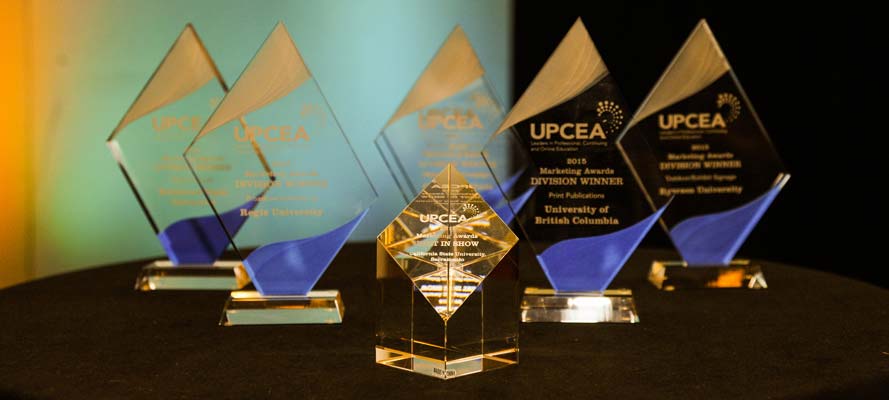Learning Mobility in Action: Removing Barriers and Recognizing the Whole Learner

By Amy Claire Heitzman, Ph.D.,
Deputy CEO and Chief Learning Officer, UPCEA
Learning Mobility: A Movement Taking Shape
At this year’s AACRAO Technology & Transfer: A Learning Mobility Summit, higher education leaders from UPCEA member institutions gathered to explore a question at the heart of the learner mobility movement: How can postsecondary institutions recognize, record, and reward all learning—wherever and however it occurs?
Moderating this conversation alongside visionary colleagues Keisha Campbell (Morgan State University), Marc Booker (University of Phoenix), and Katherine Antonucci (Arizona State University) was a privilege. Together, we explored what it means to make learning truly mobile—creating fluidity across institutions, systems, and the span of a learner’s life.
Putting Learners at the Center
Panelists agreed: learning mobility begins and ends with the learner.
Booker described it as “a change in perception”—a shift from valuing only the credits earned in a single institution to recognizing the whole of a learner’s experience, knowledge, and skills. “It’s about recognizing the learner for everything they bring to the table,” he shared.
At Arizona State University, Antonucci echoed that spirit of inclusion. “We measure ourselves by who we include, not exclude,” she said, describing ASU’s initiatives like Career Catalyst and Work+Collective, which connect academic learning to work experiences and real-world skills.
Engaging the Whole Campus
We then turned to the question of who must be involved to make learning mobility real.
For Booker, the answer was clear: “If learning mobility is about recognizing the learner in all aspects, then who on campus needs to be engaged? Everyone.” He emphasized how connecting data across academics, IT, faculty, and student services creates “virtuous cycles of success” that improve both learning and teaching.
Campbell shared that it’s “important to note that each school can have a different journey and set of resources at their disposal”, and that “it’s ok to start where you can” as an institution. This can be a factor in determining how to approach the early stages of engaging stakeholders on the topic of learning mobility.
Antonucci added that culture change often begins with technology. ASU’s efforts to simplify transfer credit evaluation with the Triangulator have sparked new conversations about equity, policy, and practice. “When technology removes barriers,” she explained, “we can focus on changing culture.”
Technology, Trust, and Storytelling
The panel’s discussion on Learning and Employment Records (LERs) was one of its most dynamic.
Booker offered a candid reflection: “The issue isn’t the technology—it’s the story. If employers don’t come along, we’ll just be creating the next acronym.” He emphasized that LERs, Comprehensive Learner Records, and similar tools must help learners tell their stories in ways employers understand and value what unique experiences, traits, and skills the learner can bring to an organization..
Antonucci highlighted ASU’s Trusted Learner Network, which gives students control of verified digital credentials—an innovation that both empowers learners and reduces systemic barriers.
Campbell reminded everyone that a key to success “is involving the registrar in learning mobility processes.” She notes that not only do registrars “play an important role in determining the integrity and validity of credentials,” but that they also sit at the intersection of institutional data and technology integrations on campus, which will be essential to any successful LER implementation.
Breaking Down Barriers
Even as new tools and frameworks emerge—like AACRAO’s Learning Mobility Pillars, a set of LER Principles authored by a collective group of stakeholders including UPCEA, and an emergent Learning Mobility Framework —many barriers remain:
- Lack of interoperability across systems
- Inconsistent policies
- Challenges in identifying learners across modalities
Yet across our conversation, optimism prevailed. Institutions are finding creative ways to move forward—through collaboration, data alignment, and a shared belief that learning deserves to be recognized no matter where it happens.
Continuing the Work
This dialogue doesn’t end here. UPCEA and AACRAO are continuing to advance learning mobility efforts across the ecosystem—through research, coalition work, and professional development.
We’ll reconvene in early 2026 for a Strategic Conversation hosted by the UPCEA Council for Credential Innovation to continue the conversation, share what’s working, and imagine what comes next.
Because learning mobility is more than a framework—it’s a movement toward equity, access, and recognition for every learner.
Amy Heitzman is Chief Learning Officer and Deputy CEO of UPCEA, leading work at the intersection of research, policy, and innovation in professional, continuing, and online education.
Content was refined with assistance from ChatGPT and fully reviewed by UPCEA staff for accuracy.
Other UPCEA Updates + Blogs
Don’t Bring a Brochure to a Robot Fight: Winning Page One and the AI Overview
Imagine your bellwether program stepping into a modern search arena with a glossy tri-fold and a storied reputation, ready to…
Read MoreFriday Focus: Nurture Your Career and Yourself
In celebration of National Distance Learning Week, UPCEA is highlighting key resources each day that showcase how online and professional…
Read More

